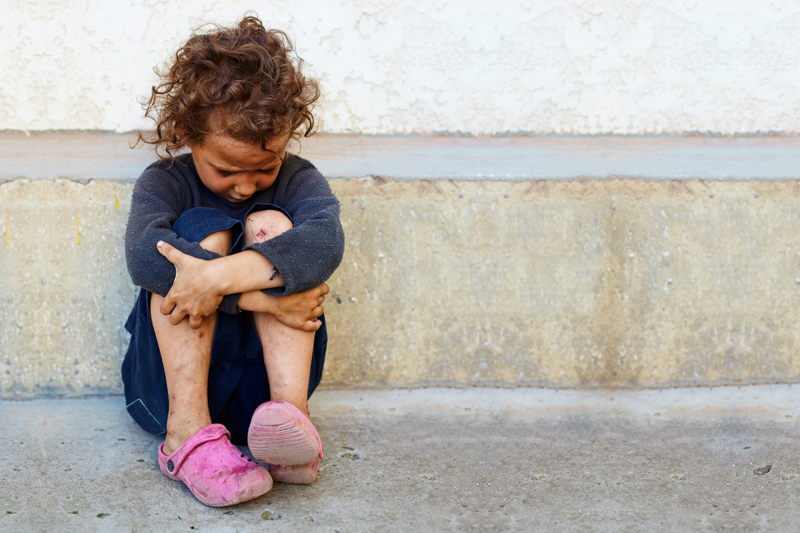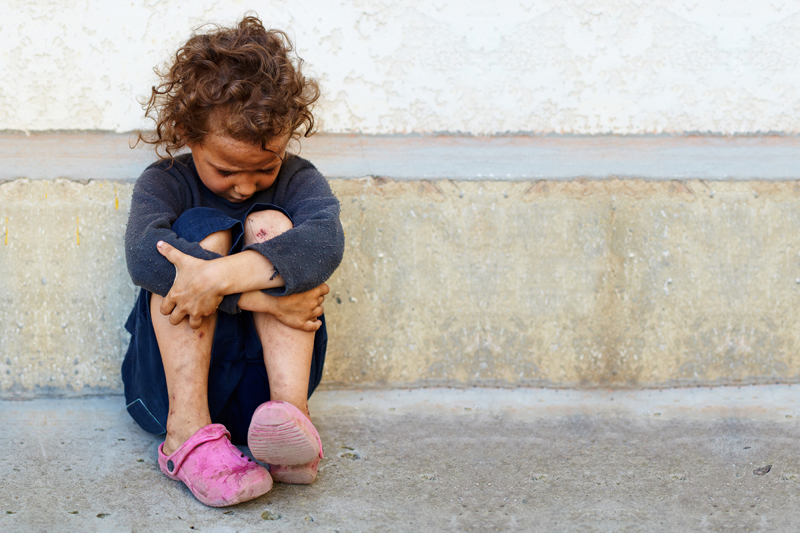Identifying Human Trafficking Victims

According to the Federal Bureau of Investigation (FBI) Human Trafficking Today’s Slave Trade website, “the majority of victims in human trafficking cases are women and young girls from Central American and Asian countries. They are primarily forced into the commercial sex industry and domestic servitude. Men and boys are typically victimized in the migrant farming, restaurant, and other service-related industries. However, there are an increasing number of young males being forced into the commercial sex industry as well”. Yet, the FBI cautions that “not all of the victims of human trafficking in the U.S. are foreign nationals; some are American citizens or residents”.
Many victims are teen runaways taken across the country (far away from their home town) which isolates the teen. Then the teen is forced to take illicit drugs leading to addiction. Initially, the teen is confined to a small room and beaten and raped until she complies usually out of fear. Sadly, habitual runaways are the perfect trafficking victim for the commercial sex trade because many people give up looking for them after the run away for the third, fourth, or fifth time. When the runaway’s family is unable to afford to keep looking for their runaway, they must continue working and living without knowing where their child is and if he or she is safe.
By transporting a runaway to the other side of the country it makes it difficult for them to escape their situation or be able to afford a way back to their home. There are relatively few public payphones available today as compared to the early 70’s, 80’s, and 90’s, where one was located on almost every corner. Even landlines are becoming obsolete as cell phones become less expensive, allowing them to be bought with cash and no information. They can be used for a month or so and thrown away, which makes it difficult for someone without a cell phone to find a way to get help.
This is one reason human trafficking in becoming a major focus of law enforcement officials on the local, state, and federal levels. Today, law enforcement officials are being trained to recognize the signs of human trafficking victims and to pursue an investigation when red flags are raised. Previously when a teen or adult was arrested for “walking the street” or prostitution, they went to jail, even if there may have been evidence, or physical injuries to suggest they were being coerced.
Since human trafficking is happening all across America it is possible that anyone may encounter a victim in their hometown or while traveling for business or pleasure. You can learn how to recognize these signs the Polaris Project website offers extensive information on how to identify a victim of human trafficking based on certain situational and behavioural signs that may be evident when encountering a victim. These red flags should not be ignored. If you suspect you are encountering someone you believe may be a victim and are concerned for their safety please call 911 or contact your local law enforcement.
The Polaris Project has good information on their website to learn what to look for in a human trafficking victim. The victim may exhibit any of the following signs in their behavior or living situation. Most human trafficking victims live in very restricted and controlled environments and are under constant supervision, so they may not be able to answer questions easily. The person “in charge of the victim” will often answer any questions asked of the victim.
The victim will often exhibit a high level of anxiety or appear severely depressed, and they will be hyper vigilante about their surroundings if they are by themselves. A victim’s level of anxiety, fear and paranoia will exacerbate quickly to a panic level if someone mentions involving the authorities. In addition to being anxious and fearful, victims tend to avoid making eye contact. Another key sign that something is not right is most victims of human trafficking or the commercial sex trade industry will have very few, if any personal possessions with them.
In addition, they will have no money, and no identification. They are usually unfamiliar with their physical surroundings, and will not be able to verify a home address or telephone number. Yet, they may try to cover by claiming to be just visiting or having only recently relocated to the area. Upon further questioning it may become apparent that they cannot even identify the town or the state they are currently “visiting". They may exhibit signs of physical injuries that they cannot explain resulting from physical or sexual abuse. Many victims often are in need of basic health or dental care, and may appear underweight or malnourished. The biggest red flag for outsiders to be on alert for is the multiple, recurrent discrepancies in their story.
Since human trafficking is happening all across America it is possible that anyone may encounter a victim in their hometown or while traveling for business or pleasure. Please take the time to learn what the warning signs are related to human trafficking victims and if you recognize these signs in someone contact local law enforcement or your local FBI.
In addition, really look at the children you meet in your community or when you are traveling. Look at their face and eyes and make note of any birth marks or scars and then go to the National Center for Missing and Exploited Children (NCMEC) website to see if you recognize a missing or abducted child. Remember you can make a difference in the life of a child. If you suspect you have encountered someone who is a human trafficking victim or a missing child immediately contact local law enforcement with your information.
Many victims are teen runaways taken across the country (far away from their home town) which isolates the teen. Then the teen is forced to take illicit drugs leading to addiction. Initially, the teen is confined to a small room and beaten and raped until she complies usually out of fear. Sadly, habitual runaways are the perfect trafficking victim for the commercial sex trade because many people give up looking for them after the run away for the third, fourth, or fifth time. When the runaway’s family is unable to afford to keep looking for their runaway, they must continue working and living without knowing where their child is and if he or she is safe.
By transporting a runaway to the other side of the country it makes it difficult for them to escape their situation or be able to afford a way back to their home. There are relatively few public payphones available today as compared to the early 70’s, 80’s, and 90’s, where one was located on almost every corner. Even landlines are becoming obsolete as cell phones become less expensive, allowing them to be bought with cash and no information. They can be used for a month or so and thrown away, which makes it difficult for someone without a cell phone to find a way to get help.
This is one reason human trafficking in becoming a major focus of law enforcement officials on the local, state, and federal levels. Today, law enforcement officials are being trained to recognize the signs of human trafficking victims and to pursue an investigation when red flags are raised. Previously when a teen or adult was arrested for “walking the street” or prostitution, they went to jail, even if there may have been evidence, or physical injuries to suggest they were being coerced.
Since human trafficking is happening all across America it is possible that anyone may encounter a victim in their hometown or while traveling for business or pleasure. You can learn how to recognize these signs the Polaris Project website offers extensive information on how to identify a victim of human trafficking based on certain situational and behavioural signs that may be evident when encountering a victim. These red flags should not be ignored. If you suspect you are encountering someone you believe may be a victim and are concerned for their safety please call 911 or contact your local law enforcement.
The Polaris Project has good information on their website to learn what to look for in a human trafficking victim. The victim may exhibit any of the following signs in their behavior or living situation. Most human trafficking victims live in very restricted and controlled environments and are under constant supervision, so they may not be able to answer questions easily. The person “in charge of the victim” will often answer any questions asked of the victim.
The victim will often exhibit a high level of anxiety or appear severely depressed, and they will be hyper vigilante about their surroundings if they are by themselves. A victim’s level of anxiety, fear and paranoia will exacerbate quickly to a panic level if someone mentions involving the authorities. In addition to being anxious and fearful, victims tend to avoid making eye contact. Another key sign that something is not right is most victims of human trafficking or the commercial sex trade industry will have very few, if any personal possessions with them.
In addition, they will have no money, and no identification. They are usually unfamiliar with their physical surroundings, and will not be able to verify a home address or telephone number. Yet, they may try to cover by claiming to be just visiting or having only recently relocated to the area. Upon further questioning it may become apparent that they cannot even identify the town or the state they are currently “visiting". They may exhibit signs of physical injuries that they cannot explain resulting from physical or sexual abuse. Many victims often are in need of basic health or dental care, and may appear underweight or malnourished. The biggest red flag for outsiders to be on alert for is the multiple, recurrent discrepancies in their story.
Since human trafficking is happening all across America it is possible that anyone may encounter a victim in their hometown or while traveling for business or pleasure. Please take the time to learn what the warning signs are related to human trafficking victims and if you recognize these signs in someone contact local law enforcement or your local FBI.
In addition, really look at the children you meet in your community or when you are traveling. Look at their face and eyes and make note of any birth marks or scars and then go to the National Center for Missing and Exploited Children (NCMEC) website to see if you recognize a missing or abducted child. Remember you can make a difference in the life of a child. If you suspect you have encountered someone who is a human trafficking victim or a missing child immediately contact local law enforcement with your information.

Related Articles
Editor's Picks Articles
Top Ten Articles
Previous Features
Site Map
Content copyright © 2023 by Erika Lyn Smith. All rights reserved.
This content was written by Erika Lyn Smith. If you wish to use this content in any manner, you need written permission. Contact Erika Lyn Smith for details.



